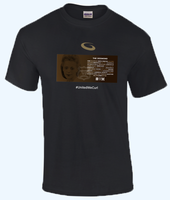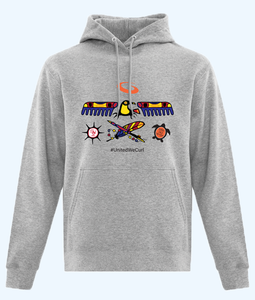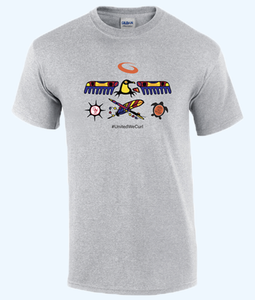#UnitedWeCurl T-Shirt: The Desmond
- The Desmond was designed by Andrew Paris as part of the #UnitedWeCurl initiative.
- 10-oz, 90/10 cotton/polyester
- Taped neck and shoulders.
Sizes: Small, Medium, Large, Extra Large, XX Large, 3XL, 4XL
Note: Special order item. Please add 7 business days to the estimated date of arrival.
The Desmond design was done by Andrew Paris, a Black curler of 20+ years living in Truro, Nova Scotia. The Desmond was designed to tell the story of the Black community in Canada and create a conversation in Curling clubs that will lead to changing the face of our great sport. The design was named in honour of Viola Desmond, a Black Nova Scotian who became a pioneer in the movement for equality by challenging racial segregation at the Roseland Theatre in New Glasgow, Nova Scotia.
Proceeds of the sale of the matching Desmond broom will go to the Black Rock Initiative, a not-for-profit created by Paris to introduce BIPOC youth to the sport while also providing Curling clubs with the support and tools necessary to be a welcoming and diverse resource to their entire community.
The Desmond has multiple shades of Black and brown incorporated into the base, to acknowledge that the Black community in Canada is comprised of roughly 1.2 million people with a variety of skin tones. The middle of the brush has listed 30 former and current Canadian Black communities. The top of the brush has three adinkra symbols:
- Mpatapo - A symbol meaning reconciliation, peacemaking and forgiveness. It represents the knot or bond that binds parties in conflict to resolve their dispute in a peaceful way.
- Sankofa - A symbol meaning the importance of learning from the past. It comes from the expression “return and get it”.
- Dwennimmen - A symbol meaning both humility and strength characteristics. The two ram horn heads symbolize the humility found in those who have strength of leadership. It also symbolizes the strength Africans needed in order to survive the middle passage, the strength needed to fight for their rights and freedoms, and the humility to forgive, but not forget.
Above the Pan African colours at the base of the brush is the crest of The No. 2 Construction Battalion, Canadian Expeditionary Force. The battalion was Canada’s first and only all-Black battalion, based out of Nova Scotia. It was created after hundreds of Black Canadians volunteered to serve in the First World War, but were initially turned away from enlisting. The brush is topped off with Andrew Paris’ signature and a QR code to information on the #UnitedWeCurl initiative.







